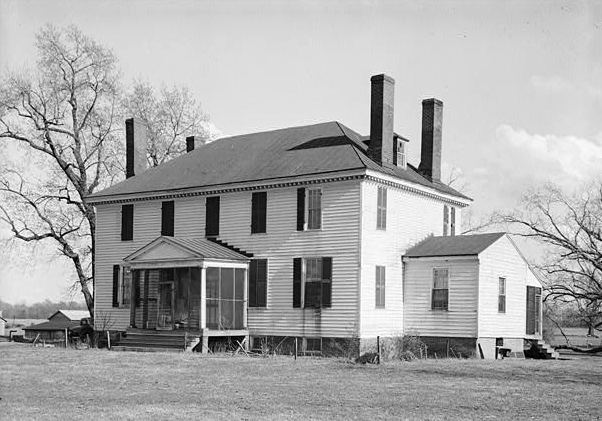Built c. 1790 (1790) NRHP Reference # 80004406 Designated VLR September 21, 1976 Local time Saturday 11:07 AM | VLR # 018-0029 Area 4.957 km² Added to NRHP 10 March 1980 | |
 | ||
Weather 16°C, Wind NW at 8 km/h, 65% Humidity | ||
Weyanoke is an unincorporated community in Charles City County, Virginia, United States. In 1619 the English transported African slaves to the Weyanoke Peninsula. They created the first African community in North America. The Westover Plantation and related archaeological sites were listed on the National Register of Historic Places in 1980.
Map of Weyanoke, VA 23030, USA
The area was named for, and historically inhabited by, the Weanoc (also spelled Weyanoke) Indians, an Algonquian-speaking tribe of the Powhatan Confederacy. The peripatetic movements of this tribe back and forth between their original home and North Carolina during the years following the Second Anglo-Powhatan War (1644–46) were extensively documented as part of the later boundary dispute between Virginia Colony and North Carolina Colony, and this unusual wealth of detailed information has been the subject of much study. At the heart of the dispute was the intended location of the "Weyanoke River" mentioned in the Carolina Charter boundaries, as the Weyanoke had by then lived on several rivers, and each colony produced many witnesses avowing that they had known various local rivers by that name.
Despite their many moves, the Weyanoke after 1646 became partly Anglicised, preferring to have some English-style houses built, rather than yehakans, wherever they moved. The colony, in assigning them reserve land on the upper Blackwater in 1650 (from which they were driven by colonists the following year), even expressed a desire to teach the Weyanokes the English concept of property ownership, and this was successful. In their subsequent wanderings, the Weyanoke always made land purchase or rental contracts with the chiefs of the Iroquoian-speaking Tuscarora and Nottoway tribes. By the 18th century, they had fully integrated with the Nottoways, and were speaking their language, their former presence visible only in the surname "Wineoak".
The Weyanoke Plantation includes a formal Georgian style mansion built in the 1790s and 40 archaeological sites. The mansion is a two-story frame house sheathed with molded weatherboards and set on a brick foundation. It was built by Fielding Lewis who was named for his uncle Col. Fielding Lewis of Fredericksburg.
It passed through marriage to the Douthat family and remained in the Douthat family through the American Civil War when in June 1864 the Union Army under General Grant crossed from Weyanoke Point to Flowerdew Hundred on the south bank of the James River on a hastily constructed pontoon bridge. The original house was enlarged after 1938. Within the property's boundaries are the archaeological remains of man's continuous occupation which spans 10,000 years.
In 1972 Weyanoke was acquired by Lawrence Lewis, Jr. a descendant of Fielding Lewis. Lewis, a businessman, philanthropist, benefactor of generations of conservative politicians and founder of Flagler College in St. Augustine, Florida was an heir to a fortune amassed in oil and railroad investments by Henry Morrison Flagler, who in 1870 founded Standard Oil Co. with John D. Rockefeller. Lewis' fortune was estimated at $120 million in the July 1993 issue of Virginia Business magazine.
The Weyanoke Association was formed in Charles City County in 1996 to help mixed-race black and Indian individuals research, understand and celebrate their joint heritages.
